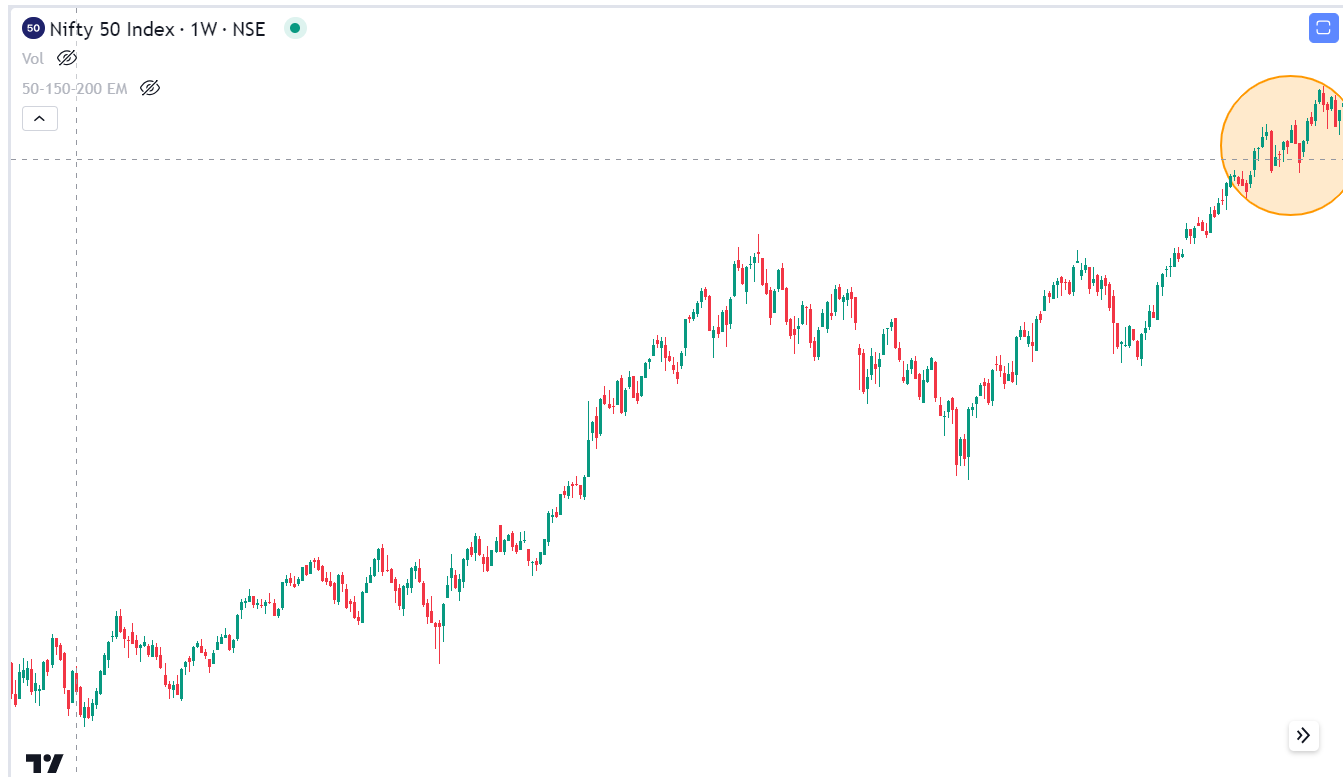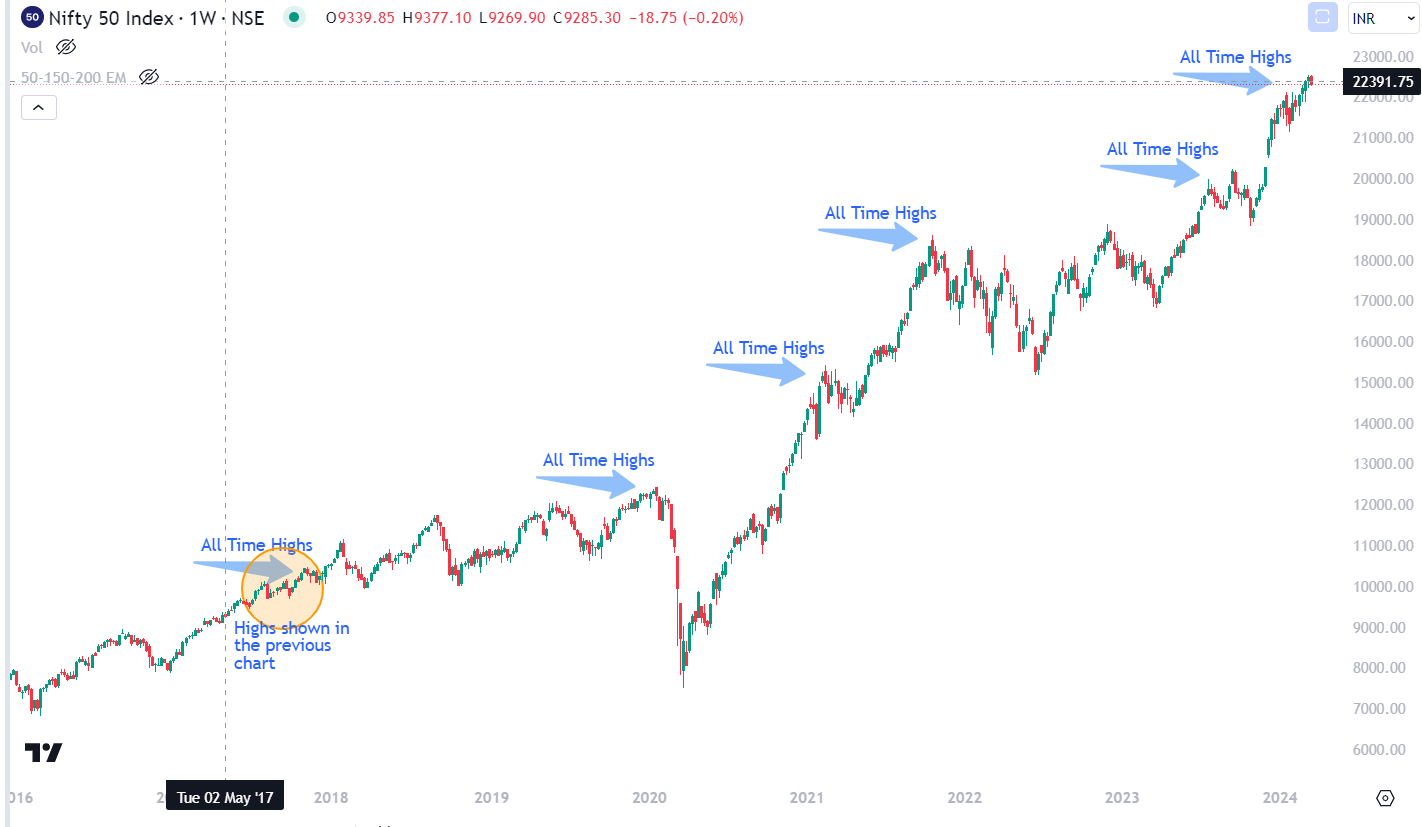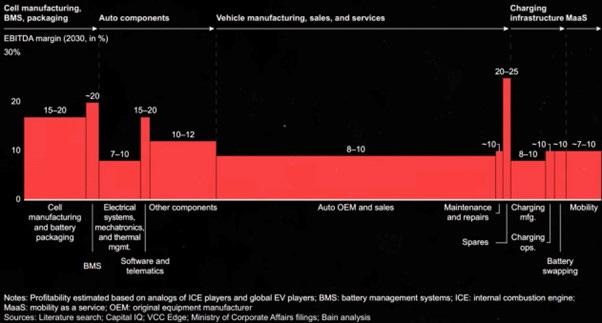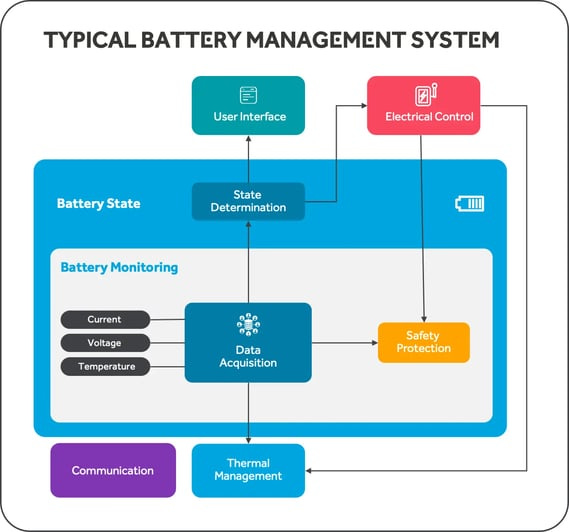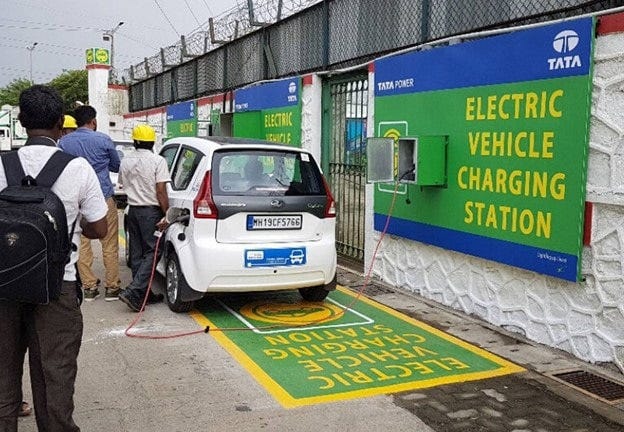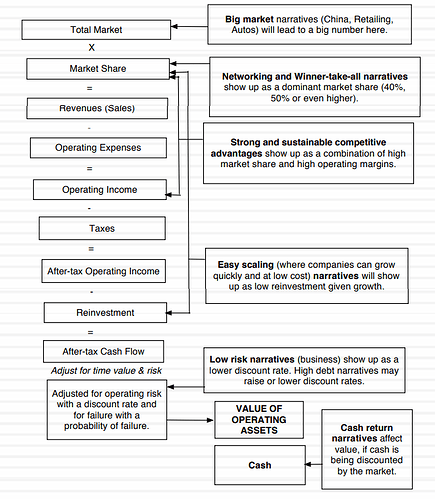The 1-in-4 Rule
Mindset for thriving in any market regime
I have this notion that I keep repeating all the time – investing is 80% psychology. It is the yours, the investor’s mindset, that determines the result over time. And there is no better time to realise this than in a market downturn.
New investors flock to the market
A lot of investors have joined the markets as investors, traders, speculators in the last four years as the data suggests. They have not seen a market that corrects and stays down for weeks, months and sometimes years. They have only seen a buy-on-dips market where all falls are short and recovery quick. They have been conditioned to believe that that’s how markets are. That it is a surefire way of making money.
Academic research indicates that the timing of when an individual begins investing can significantly influence their investment outlook and behaviour over the years. This phenomenon is often linked to the prevailing market conditions at the time of entry, whether it be a bear market or a bull market.
Greed and fear
When there is a bull market the predominant thought is to maximize returns and investors start chasing momentum. Greed dominates. They gravitate towards funds, investors, stocks which provide high short-term returns.
In a falling market, the predominant thought is fear. Fear of losing the profits made but not yet booked. Also regret of not having sold earlier at the first signs of trouble.
The media, and increasingly WhatsApp groups, become full of people who have moved to cash just before the crash. Yet no one discloses when they moved to cash. And interestingly these same people would also get in just before the markets start moving up!! Unfortunately, over many decades you realise that these people never seem to have made a lot of money from the markets despite being able to miraculously time the markets every time.
Review your reactions
It is important to review how you are reacting to the movements in your stock holdings. Is it making you anxious? Are you feeling helpless? Are you feeling you made a mistake by buying a particular stock or investing in a particular fund?
Then try to ascertain why is this feeling coming. When you invested what thought process did you have? What was your time horizon then? How comfortable did you think you would be with the investment if it went down 20%?
If you really think it through you will realise that you are most anxious, fearful of situations where you got in without any thought, or because you were greedy or for the fear of missing out.
Stay away from media
The media thrives on negative news. And that includes social media. Humans, by nature, are attracted to negative news more than positive news. So, you will have a lot of people giving random gyan on what will happen tomorrow. Realise that no one knows what tomorrow will bring. No macro economist, no technical analyst, no astro analyst, no fundamental analyst can tell you how markets will do in the next one month.
Process, process, process
The most important thing is your investment process. Your process should include multiple aspects like your time horizon, lifestyle choice, your temperament etc. Your choice of stock (or fund) should be dependent on these.
For example, my inherent thought process is that of a wealth maximiser with an eye for risk. Given a toss-up between a wealth creation and a risky opportunity, I will take the calculated risk. But I will not bet my house on it. That means I am comfortable with volatility. Also, my time horizon is very long. So, I am comfortable with holding stocks for a long time. I also believe in buying reasonably high-quality businesses but do not believe in absolute valuations. There are many such beliefs that I have and my portfolio will need to be a reflection of that if it has to be sustainable for me for very long periods of time.
Dealing with market corrections
The most obvious thing to do is to keep following your process. If you have a process that has worked over years and across market cycles, then it does not make sense to abandon it at the first sign of trouble.
Another important factor is, if you are invested for the long term, (mind you, that is different from being a long-term investor), then sometimes the best course of action is just to do nothing.
The difference between being invested for the long term and being a long-term investor is that a long-term investor holds a stock for years whereas the former can actually keep changing individual stocks but the portfolio remains for decades.
The 1-in-4 Rule: Best to remind ourselves frequently
I have this rule that I always keep at the back of my mind. It goes like this.
- 1 in 4 years will be bad where we will lose money.
- 1 in 4 stocks will not play out the way we thought it would.
- 1 in 4 stocks we will get in or out too early or too late.
In addition, once every year, we are likely to see a 10% fall in the markets. Once every 2-3 years, a 20% fall and once every 8-10 years a 30%+ fall.
The problem is we don’t really know which of these we are in now. Is this the one year where we will lose money? Or is this the stock in which we are making a mistake on?
Since we don’t know if this year will be that bumper year or that bad year, the most rational thing to do, if we have a long-term horizon is to remain invested.
Once we understand this, it is easier to handle the ups and downs. Plan for the occasional speed breaker on the road. It is not that you leave your house only when you know that the road to your destination is all clear with zero traffic. You get out on the road and make the journey. Along the way, sometimes the traffic is slow, sometimes fast and if there are diversions you take them as long as they take you towards the destination.
It is exactly the same here. Just keep in mind the destination in this journey is to compound your capital at a reasonable rate over your investment horizon and not make large capital losses.
Note: This article first appeared in The Economic Times

